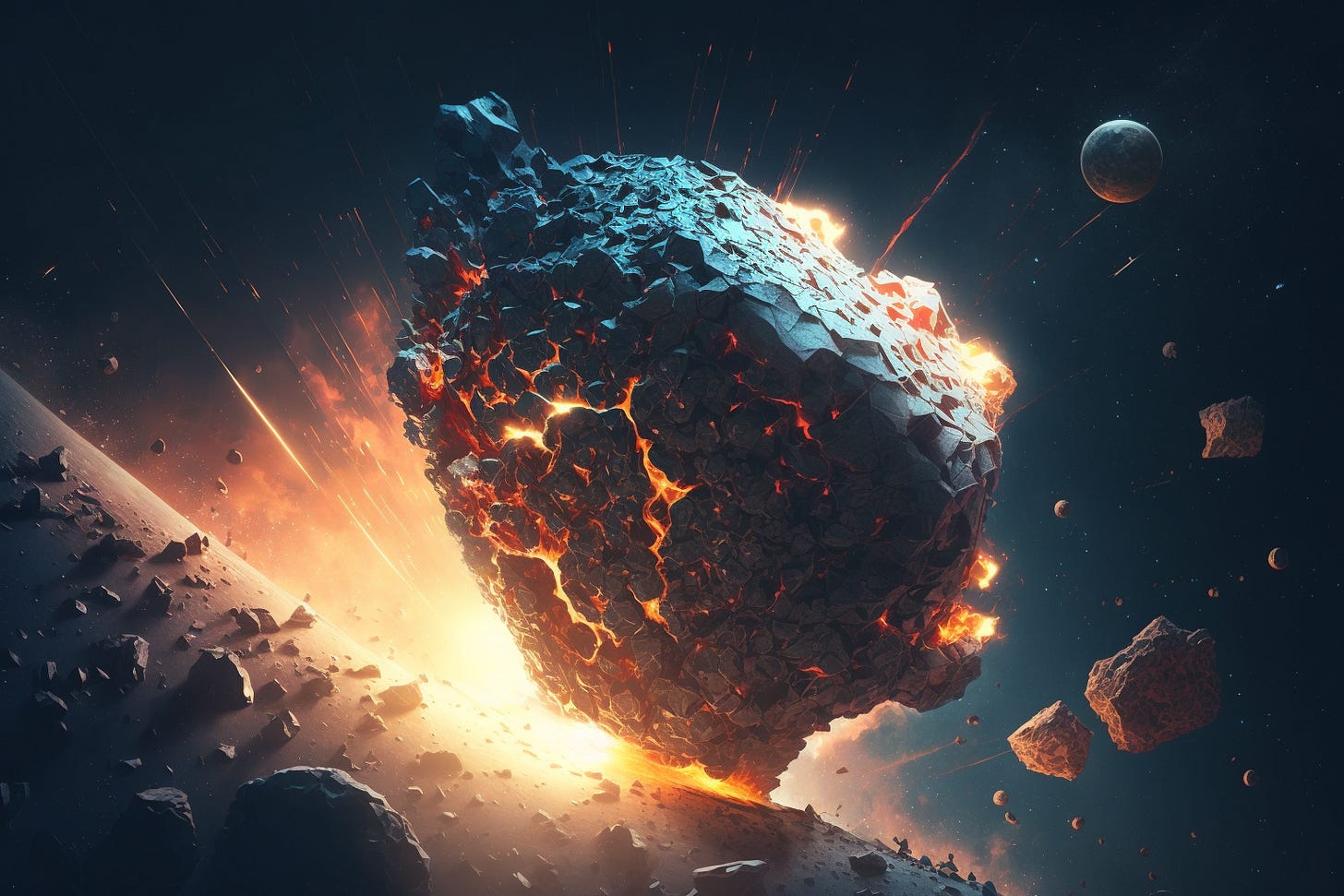What do we Know About Asteroids
Exploring the Mysteries of the Cosmos: Insights and Discoveries on the Nature and Impact of Asteroids in Our Solar System
Asteroids are small, rocky bodies orbiting the Sun – typically in between Mars and Jupiter. They have been around since our solar system formed 4.6 billion years ago and clues to their origins can be found by studying them closely. But what do we really know about asteroids?
The composition of asteroids varies greatly depending on their origin. Some contain metals while others may be made up mostly of ice or rock materials like carbonaceous chondrites which is an abundant class of meteorites that originated from primitive asteroidal objects called parent bodies. The majority (over 75%) are located within a belt known as the “main-belt” where they orbit between Mars and Jupiter at distances ranging from 2-3 AU away from the sun with orbital periods taking anywhere from three to six years depending on their size. These main-belt asteroids also vary greatly in diameter: Some range only meters wide while other larger ones exceed hundreds kilometers across! However, there is still much unknown regarding exact compositions due to a lack of observational data beyond Earth's atmosphere, thus preventing any direct sampling efforts so far (at least until the Juno mission).
Due to cosmic collisions throughout time, some pieces of asteroids break off into space and sometimes form minor planets such as Trojans near Lagrange points L4/L5 ahead behind each planet respectively whereas Near Earth Asteroids (NEAs) become rather more interesting because they pass in close enough proximity to put us at potential risk should an impact actually occur someday. The probability of this is still low, however it is best to remain vigilant just in case such a scenario arises. On a brighter note, NEAs provide astronomers an invaluable opportunity to conduct research study on these mysterious extraterrestrial rocks in ever closer detail, possibly unlocking secrets to help understand even further history of the universe itself.
Asteroids are large, rocky bodies that orbit the sun and can be found in vast numbers throughout our solar system. Many of these asteroids contain valuable minerals such as gold, platinum, nickel and iron – all materials with a high market value here on Earth. As space exploration evolves more fully into commercialization projects like asteroid mining could become a reality within the next few decades or so. This would mean potentially exploiting resources from objects located thousands of kilometers away for their precious metals!
The idea to mine asteroids has been around since before NASA was created – but only recently have we made enough progress to make it plausible today. The concept is relatively simple: A spacecraft equipped with robotic arms will fly out towards an asteroid belt (like those circling Jupiter) then latch onto one particular body after detecting its composition using sensors onboard the craft itself – once secured they’ll begin extracting material either through traditional drilling methods or possibly vacuum-based processes which suck up particles without having any physical contact whatsoever! Afterward, these extracted mineral deposits must re-enter Earth's atmosphere safely while maintaining integrity during transport back home, whereupon they would finally arrive at a processing plant ready to be used in new industries and innovations.
Despite all the optimism surrounding such endeavors there remains quite significant risks associated – chiefly among them being potential impacts between large chunks flying off course when released too quickly from their host satellites and potentially crashing into unaware cities beneath if not managed appropriately. This fear has led many skeptics across governments worldwide ro question just how viable/safe it would be to implement something so complex. Ultimately though whether asteroid mining turns out to be successful commercially, depends largely on both cost effectiveness in developing adequate infrastructure capable of handling long distance operations plus the positive public perception that is needed to get people to willingly invest heavily into foreign investment opportunities outside of core economic boundaries we’re traditionally familiarized with.
The debate about the possibility of life on asteroids has been a source of research and fascination for many years.
Asteroids have been studied extensively since spacecrafts began exploring them in great detail beginning with NASA's Galileo mission back in 1991. This exploration revealed what scientists had long suspected: That some asteroids contain complex organic molecules made out of carbon atoms bonded together into patterns like those found inside living organisms here on Earth – the building blocks needed for life as we know it! The fact that these molecules were discovered even outside the bounds of our solar system led astronomers to wonder if perhaps there is an alien form or origin behind this discovery – prompting speculation over whether or not asteroid-borne aliens exist somewhere among us today!
That being said, despite numerous rovers sent by various space agencies such ESA (European Space Agency) and JAXA (Japan Aerospace Exploration Agency), no direct evidence exists yet confirming whether any sort of extraterrestrial forms can be sustained within an asteroid environment due to its hostile conditions i.e., powerful radiation exposure, extreme temperatures ranging between -25°C at night time and +20°C during daylight hours etc. All known biological processes require liquid water which appears to be absent from most parts located within celestial objects existing near earth’s neighborhood thus making survival impossible without alternative sources present elsewhere – something worth noting when considering potential habitable worlds beyond just Earth itself.
In conclusion, while recent discoveries suggest certain elements are necessary for sustaining primitive microbial populations may lurk beneath surface layers (of certain) larger uncharted metallic/rocky “bodies” floating through outer space – nothing concrete points towards intelligent civilizations currently residing upon similar structures orbiting stars nearby Our Solar System.




